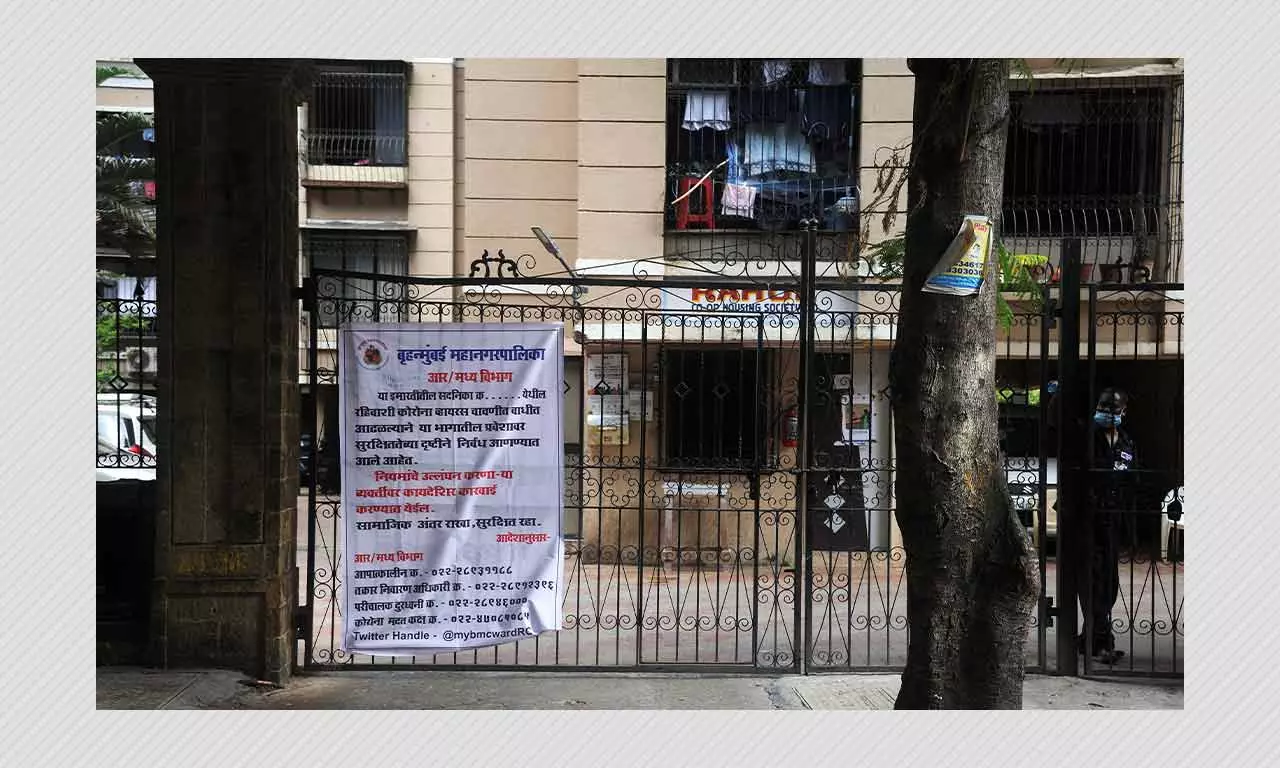COVID-19 In Mumbai: 9 Bandra Buildings Sealed As Cases Rise
Mumbai Municipal Commissioner Iqbal Singh Chahal announced that the sealing of buildings with more than five positive cases would be strictly followed to avert effects of a third wave.

Mumbai relaxed its restrictions on August 15 and in the course of 15 days, the city has seen a marginal increase in the number of COVID-19 cases reported daily in the city. While the city was reporting close to 200-250 cases a fortnight ago, the cases are now inching closer to 400.
The Mumbai division which also includes the municipal corporations of Mira Bhayander, Vasai-Virar, Thane, Navi Mumbai, Raigad, Panvel, Kalyan-Dombivali, and Ulhasnagar is gradually reaching thousand new cases daily from 600- 800 it used to report earlier.
The areas of Pali Hill in Bandra, and other areas in Khar, and Santacruz have seen nine buildings being recently sealed as each of them reported over five fresh cases. Currently, there are no slums and chawls that fall under the containment zone areas while 27 buildings and over 1,103 floors are sealed to avert a second wave like situation in the city.
Times of India reported that residents of these buildings are unhappy as their movements are now restricted for two weeks when the city is relaxing its lockdown norms and reopening. The H-ward is showing a 0.07 per cent case doubling rate, a tad higher than the city's 0.05 per cent, the official data of the BMC shows.
BOOM contacted Vinayak Vispute, assistant municipal commissioner, H ward, to understand the situation in the ward. "The cases are well under control. As per the existing protocol, if there are more than five cases, we have to seal the building and that is exactly what we are doing."
BOOM has also learnt that several of these cases are breakthrough infections but are mild infections.
Furthermore, in a meeting on Monday, Municipal Commissioner Iqbal Singh Chahal announced that the sealing of buildings with more than five positive cases should be strictly followed to reduce the effects of an imminent third wave.
Is Mumbai Preparing For A Third COVID-19 Wave?
Mumbai reported its first COVID-19 case on March 3, 2020 after a group of tourists returned to the city after visiting Dubai. Since then, the city has reported a total of 7,43,498 cases and over 15,974 deaths.
The city witnessed a slow surge in cases and had the COVID-19 situation under control till mid-August 2020. As soon as a few relaxations were announced during the festival season with Janmashtami and the eleven-day Ganpati festival, cases rose in the city.
With a sudden dip in cases at the beginning of 2021, the Uddhav Thackeray led government shared that all passengers could travel in the local trains beginning February 1. However, a month and a half later, as the second wave hit the country, the city faced a shortage of beds, medicines and depleting number of ventilators.
As the vaccination rate increases and the positivity rate under one per cent, the city has sufficient beds for now. Currently, there are 616 vacant oxygen beds and 408 vacant ventilator beds scattered in both public and private hospitals. While the BMC has shut operations in some specially created jumbo hospitals, the tents are still in place. Private hospitals that have resumed other services have also been informed to be prepared to reserve beds for COVID-19 care if cases increase.










